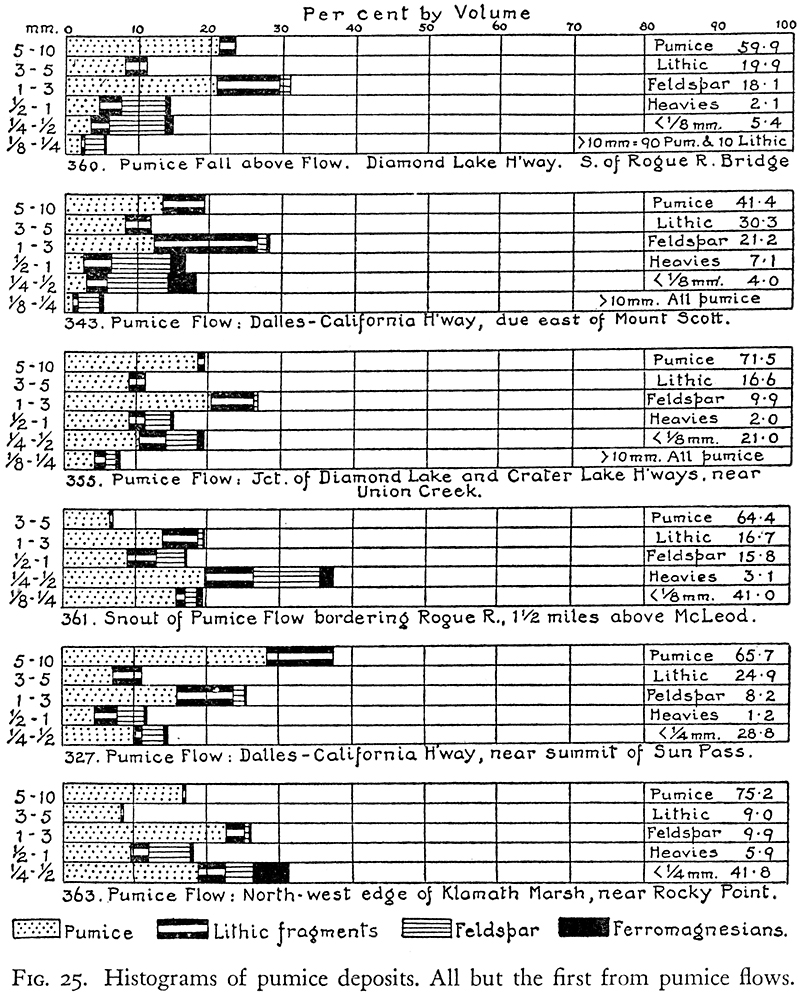The Geology of Crater Lake National Park, OregonWith a reconnaissance of the Cascade Range southward to Mount Shasta by Howell Williams
The Climax: Culminating Explosions of Pumice and Scoria
The Glowing Avalanches: Pumice and Scoria Flows
Content of Lithic Fragments
Moore expressed the opinion that there is a lack of “accidental” or foreign material in the pumice and scoria flows; on the contrary, we have found that they may be readily distinguished from the preceding pumice fall by their richness in such debris. In the main pumice fall, as we have seen, it is rare to find old lava fragments more than 5 cm. in diameter, and the total content of lithic debris averages only between 3 and 4 per cent. In the flows, on the other hand, the percentage of lithic material in the size range between 0.125 and 10 mm. varies between 9 and 31.7 and averages approximately 25 (figures 25, 26). The amount of lithic material less than I mm. in diameter is laborious to estimate, requiring careful bromoform separation. No attempt was therefore made in the field to calculate this fraction. The coarser ejecta were readily screened and separated by flotation in water. It was then found that, considering all material larger than I mm. in diameter, the percentage of lithic detritus in the combined pumice and scoria flows averages approximately 15 to 20, being higher in the scoria than in the pumice. These figures, it will be seen, are smaller than those given for the lithic content in the size range 0.125 to 10 mm. The reason is that there are few old lava fragments larger than 3 inches in size, whereas bombs of pumice occasionally reach a diameter of more than 6 feet, and bombs of scoria 3 feet across are not uncommon.


